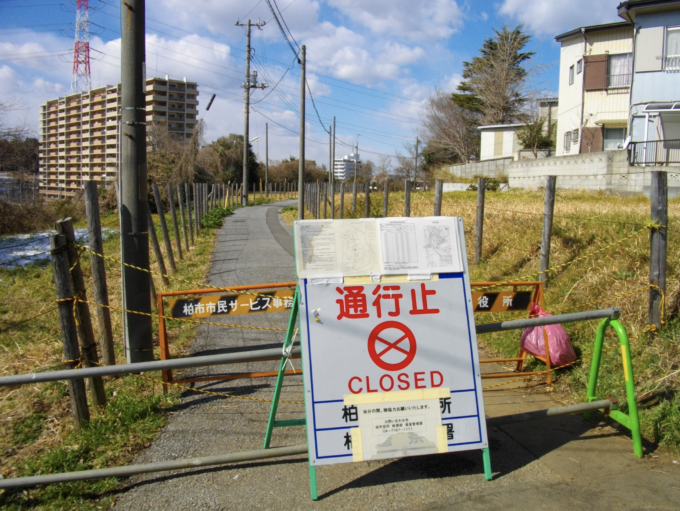
Image by Abasaa. Public Domain.
During the 11-year-long, estimated $57.4 billion (partial) decontamination efforts at the destroyed Fukushima-Daiichi reactor site in Japan, almost every novel program invented to deal with the complex, unprecedented triple catastrophe has initially failed and then needed to be re-invented. Unworkable schemes instigated to repair, decontaminate, plug-up, or prevent ongoing radioactive contamination, along with cover-ups and corruption by the Tokyo Electric Power Co. which runs the operation, have left the Japanese public wary of the company’s plans and of safety assurances from the government.
Japan’s extensive bull-dozing and mass collection of contaminated topsoil and debris, poisoned by the meltdowns’ radioactive fallout, has filled approximately 20 million one-ton bags. These millions of tons of cesium-contaminated waste are standing outdoors in mountainous stacks scattered across seven states. Some of the heavy bags have been jostled and broken open by torrential rains during typhoons.
Attempts to locate and examine the total of 900 tons of melted reactor fuel (which possibly burned through the wrecked “containments” and foundations of the three units) have failed, because robotic cameras have repeatedly been destroyed by the ferociously hot and radioactive melted wastes. Eleven years after the catastrophe, the condition and location of the melted fuel masses, known as “corium,” is still uncertain because Tepco has yet to develop a robust enough camera.
The reactors’ concrete foundations were so severely broken up by the record 9.0 magnitude earthquake, that groundwater rushes through cracks and broken pipes, pours over the three huge masses of corium and becomes highly contaminated with a mix of at least 62 radioactive materials. Tepco’s installation of an expensive “ice wall” that was dug into the ground behind the wrecked reactors, was intended to divert the groundwater keeping it away from the foundations. This fix has also failed.
Tepco has slowed the direct flow of the contaminated water into the Pacific by filtering it and then collecting it in giant tanks. But the tank farm is plagued by leaks and by the discovery that the filter system has failed. In 2018, Tepco admitted that its “Advanced Liquid Processing System” or ALPS had not removed iodine-129, ruthenium-106 and technetium-99, as well as carbon-14, and 60 other long-lived poisons, putting the lie to its repeated assurances that ALPS would remove everything but tritium. The company then promised that it would re-treat the collected water, before dumping all 1.3 million tons of the waste water into the Pacific.
In July, Japan’s nuclear regulator formally approved Tepco’s plan to dump the water into the ocean beginning in spring 2023 and continuing for 30 years. The reactors produce 140 cubic meters of contaminated water every day, a combination of ground- and rainwater that seeps into the wreckage, and cooling water mechanically poured over the three corium piles. While independent scientists and environmental historians have charged that dumping would constitute the worst premeditated maritime pollution in recorded history, Tepco’s ocean pollution solution has already been okayed by the government in Tokyo and by the International Atomic Energy Agency.
Ocean dumping would violate international law
In August, Tepco announced that it would begin constructing a tunnel to the sea for releasing the waste water. Complaints from scientists, environmental groups and Pacific Rim countries, particularly South Korea and China, have not forced Japan to reconsider the plan.
Certain international treaties forbid such deliberate pollution of the global commons. The “Convention on the Prevention of Marine Pollution by Dumping of Wastes and Other Matter,” or London Convention, prohibits any intentional release of radioactive wastes into the sea. Writing in The Korea Times, environmental attorney Duncan Currie and nuclear specialist Shaun Burnie of Greenpeace Germany noted that ocean dumping would also violate the UN Convention on the Law of the Sea by posing a direct threat to the marine environment and the jurisdictional waters of the Korean peninsula.
Tepco says the tritium concentration in the wastewater will be lowered before dumping by diluting it with seawater. However, dilution is basically a public relations scheme since the total amount of radioactive tritium will remain the same. Greenpeace’s Burnie and Currie and others have warned about tritium’s ability to form organically-bound tritium, and that — if ingested with seafood —the biological power of tritium’s beta radiation can damage human DNA.
This content originally appeared on CounterPunch.org and was authored by John Laforge.
John Laforge | Radio Free (2022-09-30T05:54:59+00:00) Fukushima: Novel Fixes Fail, Waste Dumping Threatens Pacific Ocean. Retrieved from https://www.radiofree.org/2022/09/30/fukushima-novel-fixes-fail-waste-dumping-threatens-pacific-ocean/
Please log in to upload a file.
There are no updates yet.
Click the Upload button above to add an update.